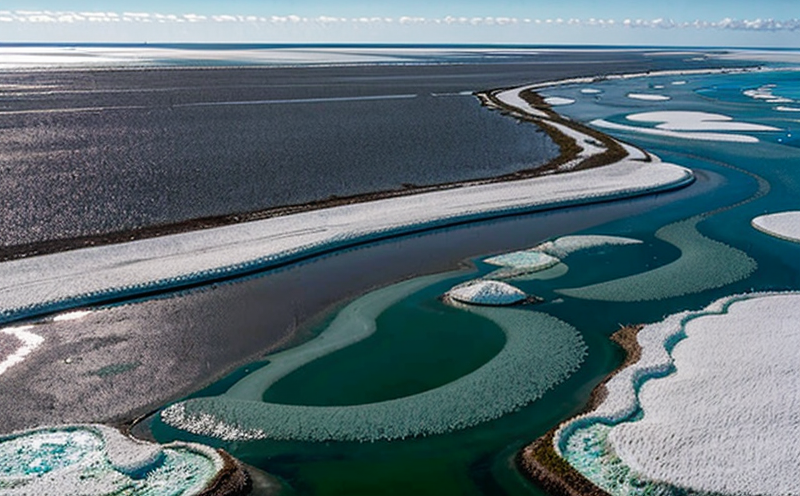Simulating the effects of repeated freeze-thaw cycles on materials in coastal areas where saltwater may accelerate deterioration
The Unseen Threat to Coastal Infrastructure Simulating Freeze-Thaw Cycles with Eurolab
Coastal areas are often characterized by harsh weather conditions, including extreme temperatures and exposure to saltwater. These environmental factors can significantly impact the durability and lifespan of materials used in construction, infrastructure, and equipment. Repeated freeze-thaw cycles, in particular, can lead to accelerated deterioration, compromising the structural integrity and safety of coastal assets.
In this article, we will delve into the importance of simulating the effects of repeated freeze-thaw cycles on materials in coastal areas where saltwater may accelerate deterioration. Well explore the benefits of our laboratory service at Eurolab, which provides a controlled environment for testing and evaluating material performance under these conditions.
Understanding the Threat Freeze-Thaw Cycles
Freeze-thaw cycles occur when water within materials freezes and expands, causing damage to the structure. When temperatures rise, the ice thaws, leaving behind salt deposits that can further deteriorate the material. This cyclical process can be particularly damaging in coastal areas where saltwater is present.
The consequences of freeze-thaw cycles on materials are far-reaching
Reduced lifespan Materials may need to be replaced more frequently, leading to increased maintenance costs and environmental impact.
Safety risks Deteriorated infrastructure can pose significant safety hazards for people and assets.
Economic losses Damage from freeze-thaw cycles can result in substantial economic losses due to replacement costs, lost productivity, and potential liabilities.
Advantages of Simulating Freeze-Thaw Cycles with Eurolab
Our laboratory service at Eurolab offers a controlled environment for testing and evaluating material performance under simulated freeze-thaw cycles. The benefits of using our services include
Early detection of issues Identify potential problems before they arise, allowing for proactive maintenance and replacement strategies.
Improved material selection Choose the most suitable materials for coastal applications based on their ability to withstand repeated freeze-thaw cycles.
Reduced costs Avoid costly repairs and replacements by understanding the long-term durability of materials.
Enhanced safety Ensure that infrastructure and equipment meet or exceed safety standards, protecting people and assets.
Key Benefits at a Glance
Here are some key benefits of simulating freeze-thaw cycles with Eurolab
Accelerated testing Our controlled environment allows for accelerated testing, reducing the time required to evaluate material performance.
Precise simulation We can simulate various environmental conditions, including temperature fluctuations and saltwater exposure, to accurately replicate coastal scenarios.
Data-driven decision-making Receive comprehensive reports and data analysis to inform informed decisions about material selection and maintenance strategies.
Expert guidance Our team of experts provides guidance on interpreting results and implementing recommendations.
QA Frequently Asked Questions
Here are some frequently asked questions about simulating freeze-thaw cycles with Eurolab
Q What materials can be tested using this service?
A We can test a wide range of materials, including metals, plastics, composites, and more.
Q How long does the testing process typically take?
A The duration of testing varies depending on the specific requirements, but we can typically provide results within 2-6 weeks.
Q Can you simulate different environmental conditions?
A Yes, we can simulate various environmental conditions, including temperature fluctuations, saltwater exposure, and more.
Q Do I need to have prior knowledge of material science or testing procedures?
A No, our team will guide you through the process, ensuring that you receive accurate results without requiring extensive expertise.
Conclusion
Simulating the effects of repeated freeze-thaw cycles on materials in coastal areas where saltwater may accelerate deterioration is a critical step in maintaining infrastructure and equipment safety. Our laboratory service at Eurolab provides a controlled environment for testing and evaluating material performance under these conditions, offering numerous benefits for businesses operating in coastal regions.
By choosing our services, you can
Reduce costs associated with premature maintenance and replacement
Enhance safety by selecting materials that meet or exceed industry standards
Make informed decisions based on comprehensive data analysis
Dont let freeze-thaw cycles compromise your infrastructure. Contact us to learn more about our laboratory service at Eurolab and discover how we can help you navigate the challenges of coastal environments.
-
Simulating the effects of repeated freeze-thaw cycles on construction materials
-
Testing materials for their ability to withstand the expansion and contraction caused by freezing and thawing
-
Ensuring that concrete, brick, and stone retain their integrity when subjected to freezing temperatures followed by thawing
-
Evaluating the ability of materials to resist cracking, spalling, or delamination after freeze-thaw exposure
-
Testing how materials like asphalt and cement react to temperature fluctuations and freezing water
-
Simulating winter conditions to assess how materials perform in regions with extreme cold and fluctuating temperatures
-
Ensuring that construction materials maintain their strength and structure when exposed to freeze-thaw conditions
-
Testing the resistance of waterproofing and sealant materials to freeze-thaw cycles
-
Verifying that construction materials used in roads, bridges, and pavements are resilient to freeze-thaw damage
-
Simulating the effects of wetting and drying, combined with freezing and thawing, on construction materials
-
Testing for the ability of materials to resist moisture absorption and freezing-related damage
-
Evaluating the durability of materials used in exterior applications such as roofing, facades, and pavements under freeze-thaw conditions
-
Ensuring that materials used in foundations and basements are resistant to water infiltration and freeze-thaw cycles
-
Verifying that materials used for building envelopes can resist cracking, erosion, and damage from freezing conditions
-
Testing how freeze-thaw cycles affect materials used in high-altitude or northern climates
-
Simulating freeze-thaw cycles in combination with other environmental stresses to assess material resilience
-
Testing for changes in the dimensional stability of materials when exposed to freezing and thawing
-
Verifying the performance of materials used in landscaping and exterior finishes after freeze-thaw exposure
-
Ensuring that frozen soil and other environmental factors do not damage foundation materials during freeze-thaw cycles
-
Testing the ability of materials to resist degradation due to the crystallization of moisture within the material during freezing
-
Testing the performance of thermal insulation materials under freeze-thaw conditions




